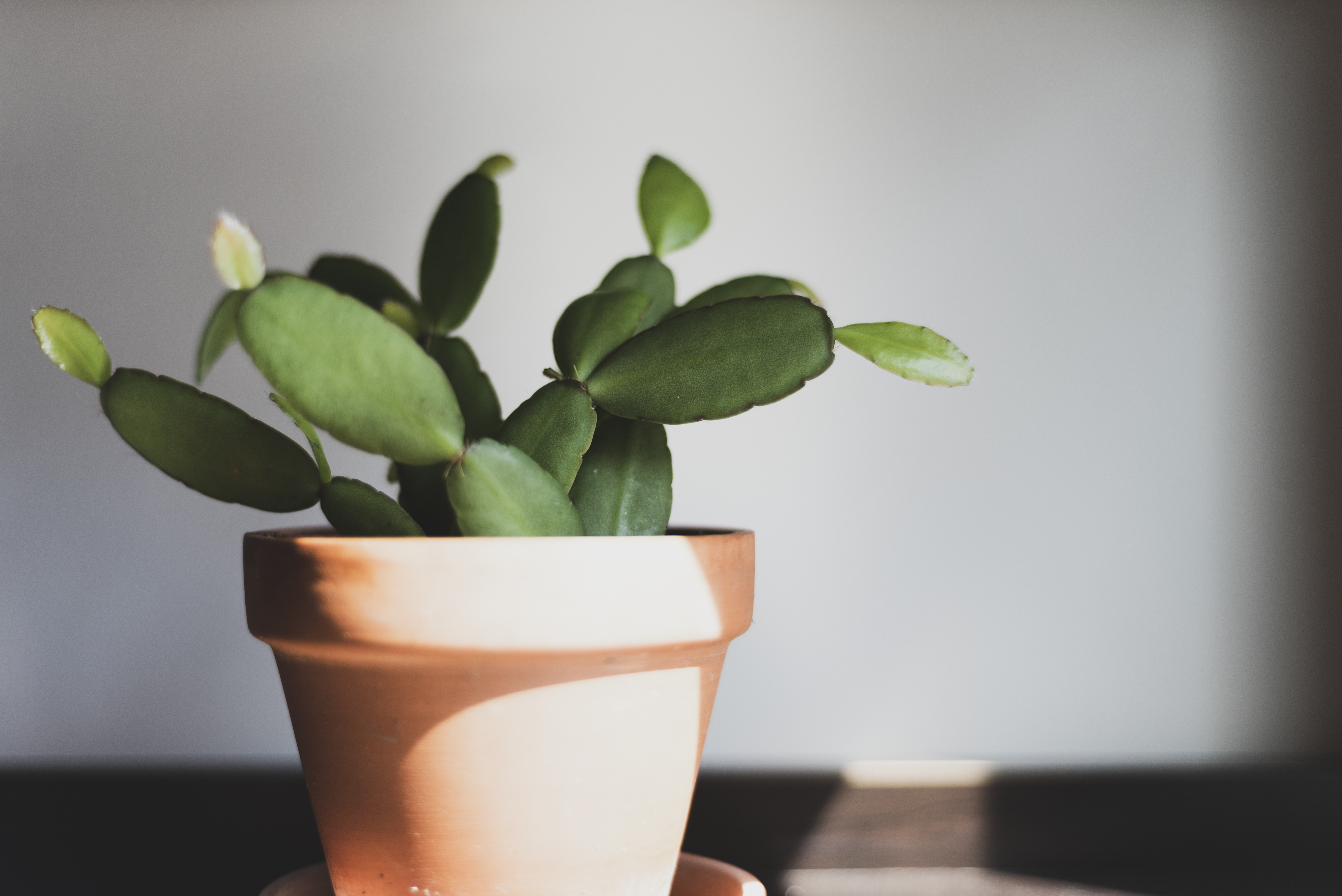Origin
The Easter Cactus ( Rhipsalidopsis × graeseri ) is a flowering succulent native to the tropical rainforests of southeastern Brazil, where it largely grows on tree trunks or possibly on the ground in rocky areas. It's able to do this due to its epiphytic nature - this is where a plant grows on top of another plant without being parasitic in nature, they use the 'host plant' for physical support only.
This plant is actually a hybrid created by crossing Rhipsalidopsis gaertneri and Rhipsalidopsis rosea . The Easter name comes from the fact that they bloom in the springtime.
Unlike the similar-looking False Christmas Cactus, the Easter Cactus has leaves with rounded edges instead of spiky ones. These are actually not really leaves - the green parts of the Easter Cactus make up the stem, which becomes segmented and flattened, making them look a bit like leaves. They can also show red edges which compliment the bright colors when the plant flowers.

Care
Like many other epiphytic cacti, your Easter Cactus doesn't like too much water - make sure not to leave it standing in water or saturated wet soil for too long. Always plant your Easter Cactus in a pot with drainage holes in a well-draining soil mix, and be sure to empty out any excess water that collects in the dish under your plant or from the cachepot. Too much water can quickly lead to root rot, which will easily kill your plant. At the same time, also avoid letting the soil stay totally dry for any longer time in between watering it too. This plant will generally tolerate slightly dry conditions better than overwatering.
Aside from watering, Easter Cactus plants also like plenty of light and a warm climate. Gradually acclimating it to direct sunlight a couple of hours daily will help it grow and bloom well in the long run.
Easter cacti like to receive a slightly cooler and more dry winter period. This can help it bloom better in spring too. They won't tolerate frost and they're more prone to overwatering when the temperatures are lower, so it's important to protect them from too cold temperatures and too wet soil during this time. A gradual acclimation to a location with temperatures in the range of about 50 - 65 F, or 10 - 18 C is good. Room temperature all year around is however also acceptable.
Take care not to move your plant around once flower buds start to appear, as the plant is quite sensitive at this stage and can easily lose the buds if it's moved to too different growing conditions (mainly if it's moved to lower light conditions than it's used to). If you buy a plant with flower buds it's therefor important to not place it too dark. A bright location with plenty of indirect, bright light just out of reach from most direct sun is a good start. Also avoid letting the soil dry up and stay dry for more than a couple of days before watering it again when it has buds and blooms.

Other
The first hybrids created of this plant had red flowers, but today you can also find pink, white or orange blooming varieties.
Compared to the Christmas Cactus, these plants can be a little more finicky in general. They prefer cold nights, and as we tend to heat our homes at night time the ideal conditions aren't always achieved in an indoor environment. It also prefers slightly higher humidity too. Your Easter Cactus will thank you for boosting the humidity around it by, for example, using a pebble tray with water near it.